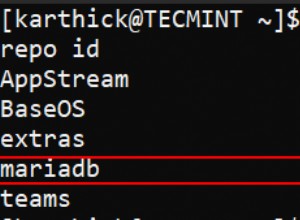Mientras investigaba un poco sobre Entity Framework, encontré la siguiente publicación:
http://romiller.com/2011/05/23/ef-4-1-multi-tenant-with-code-first/
No me da un solo dbContext para trabajar, pero solo usa una sola conexión (que fue mi razonamiento detrás de no querer usar múltiples dbContexts). Después de configurar el siguiente código:
public class oraDbContext : DbContext
{
static oraDbContext() {
Database.SetInitializer<oraDbContext>(null);
}
private oraDbContext(DbConnection connection, DbCompiledModel model)
: base(connection, model, contextOwnsConnection: false) { }
public DbSet<SomeTable1> SomeTable1 { get; set; }
public DbSet<SomeTable2> SomeTable2 { get; set; }
private static ConcurrentDictionary<Tuple<string, string>, DbCompiledModel> modelCache = new ConcurrentDictionary<Tuple<string, string>, DbCompiledModel>();
public static oraDbContext Create(string schemaName, DbConnection connection) {
var compiledModel = modelCache.GetOrAdd(
Tuple.Create(connection.ConnectionString, schemaName),
t =>
{
var builder = new DbModelBuilder();
builder.Configurations.Add<SomeTable1>(new SomeTable1Map(schemaName));
builder.Configurations.Add<SomeTable2>(new SomeTable2Map(schemaName));
var model = builder.Build(connection);
return model.Compile();
});
return new oraDbContext(connection, compiledModel);
}
}
Por supuesto, esto requiere que mis archivos de mapeo estén configurados así:
public class DailyDependencyTableMap : EntityTypeConfiguration<DailyDependencyTable>
{
public SomeTableMap(string schemaName) {
this.ToTable("SOME_TABLE_1", schemaName.ToUpper());
//Map other properties and stuff
}
}
Escribir consultas que usan múltiples esquemas es algo molesto pero, por el momento, hace lo que necesito que haga:
using (var connection = new OracleConnection("a connection string")) {
using (var schema1 = oraDbContext.Create("SCHEMA1", connection))
using (var schema2 = oraDbContext.Create("SCHEMA2", connection)) {
var query = ((from a in schema1.SomeTable1 select new { a.Field1 }).ToList())
.Concat((from b in schema2.SomeTable1 select new { b.Field1 }).ToList())
}
}




